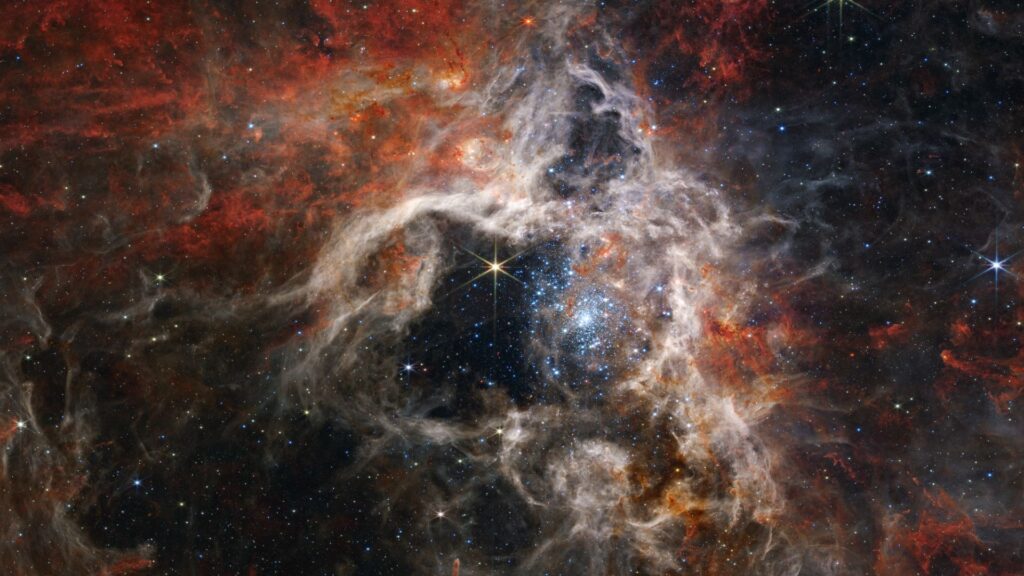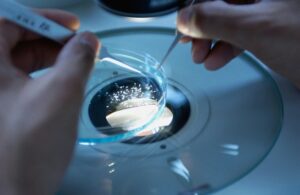
In a groundbreaking experiment, scientists have successfully recreated the universe’s first molecule, helium hydride ion (HeH⁺), under early-universe conditions at the Cryogenic Storage Ring (CSR) in Heidelberg, Germany. This unique facility, the only one of its kind globally, simulates space-like environments at temperatures just above absolute zero, allowing researchers to explore the molecule’s behavior shortly after the Big Bang.
The experiment involved colliding stored HeH⁺ ions with a beam of neutral deuterium atoms, enabling the team to observe the molecule’s reaction rates at ultra-cold temperatures for the first time. This achievement marks a significant milestone in understanding the chemical processes that occurred in the universe’s infancy.
The Significance of HeH⁺ in Cosmic History
Formed shortly after the Big Bang, HeH⁺ is a simple molecule composed of a helium atom and a proton. It represents the very beginning of chemical bonding in the universe and laid the groundwork for the formation of molecular hydrogen (H₂), the essential fuel that powers stars. Understanding HeH⁺ is crucial for scientists as it provides insights into the cooling processes that allowed protostars to condense and ignite.
For decades, HeH⁺ was assumed to play a passive role in these cooling processes. However, the new experimental results from CSR challenge this narrative, suggesting that HeH⁺ may have had a more active role than previously thought. This revelation could reshape our understanding of the early universe’s chemical dynamics.
Exploring the Cryogenic Storage Ring
Located in Heidelberg, the Cryogenic Storage Ring is a state-of-the-art facility designed to mimic the extreme conditions of space. By maintaining temperatures just a few degrees above absolute zero, CSR provides an unparalleled environment for studying reactions that occur in the vast, cold expanses of the cosmos.
According to Dr. Andreas Wolf, a leading researcher at CSR, “The ability to recreate and study HeH⁺ in such conditions opens up new avenues for understanding the chemical evolution of the universe. It allows us to test theoretical models and refine our knowledge of how the first molecules formed and behaved.”
Implications for Astrophysics and Beyond
The successful recreation of HeH⁺ and the subsequent findings have significant implications for the field of astrophysics. By providing a clearer picture of the universe’s early chemical processes, these experiments could help refine models of star formation and the development of galaxies.
Moreover, the insights gained from studying HeH⁺ could extend beyond astrophysics, influencing other scientific fields such as chemistry and materials science. The ability to observe and manipulate reactions at ultra-cold temperatures could lead to advancements in these areas, potentially impacting technology and industry.
Looking Forward: Future Research and Discoveries
As scientists continue to explore the mysteries of the universe’s early days, the findings from CSR pave the way for further research into other primordial molecules. Future experiments may focus on understanding the roles of different molecules in the cooling and formation of the first stars and galaxies.
Dr. Wolf and his team are optimistic about the potential for new discoveries. “This is just the beginning,” he states. “By continuing to push the boundaries of what we can simulate and study, we hope to unlock more secrets of the universe’s formative years.”
As the scientific community digests these findings, the implications for our understanding of the cosmos are profound. The recreation of HeH⁺ not only provides a glimpse into the universe’s past but also opens up new questions about the complex web of chemical interactions that have shaped the cosmos as we know it today.







